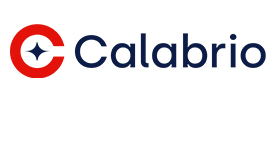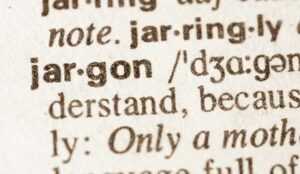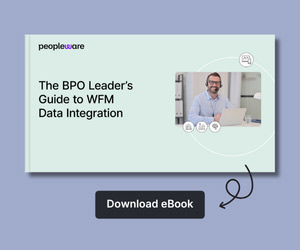Calabrio explores what it takes to equip and empower your agents to deliver winning customer experiences with this comprehensive guide to contact centre training.
In today’s hyper-competitive market, the quality of your customer service can make or break your business.
The stakes have never been higher. Recent estimates suggest that a staggering $3.8 trillion in global sales are at risk in 2025 due to one thing: bad customer experiences.
To drive customer loyalty and sustain success, contact centres must keep up with customers’ consistently rising expectations.
In our State of the Contact Centre 2025 report, leaders ranked 24/7 availability, more personalized service, and greater demand for speed, efficiency, and trust as customers’ top rising priorities.
And when more than half of customers say they’ll switch to competitor after just one bad service experience, meeting these demands head-on requires more than just hoping for the best.
It demands a strategic investment in your frontline agents – the human voice of your brand. This is where effective contact centre training comes in.
Why Investing in Agent Training Is Critical for Contact Centres in 2025
Well-trained agents aren’t just actively resolving issues; they’re busy building loyalty. That’s why organizations need to consider contact centre training an important investment, not just in their talent but the overall health of their business.
With the best approach to training, the return on investment can be significant, to say the least. Consider that 93% of customers report being more willing to make repeat purchases from companies offering positive service experiences.
Furthermore, effective contact centre training is key to keeping agents engaged and driving operational efficiency, supporting cost reduction and improved contact centre productivity.
It’s no wonder, then, that available data bears out these wide-ranging benefits of effective contact centre training. For instance, McKinsey research suggests that implementing CX programs has helped companies drive:
- 15 to 20% increases in sales conversion rates
- 20 to 50% declines in service costs
- 10 to 20% improvements in customer satisfaction
Investing in your call centre training program isn’t just core to your contact centre customer experience strategy or an operational necessity; it’s a direct investment in customer retention, brand reputation, and sustainable growth.
The Foundation: Building Your Strategic Call Centre Training Program
Moving beyond acknowledging the need for training, building an impactful call centre training program requires a deliberate and strategic approach. Simply running generic sessions won’t cut it.
Instead, you need a foundation built on understanding specific needs and mapping out a clear journey for agent development.
Put in the work of developing a comprehensive training strategy to ensure your efforts are targeted, effective, and aligned with broader business objectives.
Start With a Thorough Needs Assessment
Before designing any curriculum, you must understand what needs to be taught and who needs to learn it. A comprehensive needs assessment involves:
- Analyzing Performance Data: Dive into key metrics like Customer Satisfaction (CSAT), First Call Resolution (FCR), Average Handle Time (AHT), and other factors of QA scorecards. Ask: Where are the gaps in performance? Are there common trends indicating specific skill deficiencies?
- Reviewing Customer Feedback: Use customer interaction data to determine your audience’s most common concerns and biggest needs. Ask: What are customers saying? Are there recurring complaints about agent knowledge, empathy, or efficiency?
- Gathering Agent & Supervisor Input: Your team on the ground often has the best insights into daily challenges, process bottlenecks, and areas where more support is needed. Use surveys, interviews, and focus groups. Ask: What types of customer interactions do you struggle most to resolve efficiently? Does technology ever stand in the way of effective issue resolution?
- Identifying Business Goals: Consider your organization’s ongoing and upcoming priorities. Ask: How does training need to support larger company objectives, such as launching a new product, improving compliance adherence, or reducing customer churn?
This assessment forms the blueprint for your entire training strategy, ensuring you address the most critical areas impacting both agent success and customer experience.
Define Clear, Measurable Program Goals
Consider: what does success look like for your contact centre’s training program?
Vague objectives lead to unclear results. Set SMART (Specific, Measurable, Achievable, Relevant, Time-bound) goals. Examples of SMART training goals could include:
- “Improve FCR for Tier 1 agents by 10% within 3 months of completing the advanced troubleshooting module.”
- “Increase average CSAT scores related to agent communication by 5 points within 6 months through targeted soft skills training.”
- “Reduce onboarding time for new call centre representatives by 1 week while maintaining quality scores above 90%.”
- “Ensure 100% completion and passing scores on the annual call centre compliance training module by the end of Q3.”
Connecting training goals directly to business and agent performance KPIs not only makes it easier to demonstrate the program’s value but helps you measure, and improve, its effectiveness over time.
Structure the Agent Training Journey: Key Training Phases
As we underlined at the outset of this guide, effective training can’t be a single, one-off event; it needs to be an ongoing process that supports team members at every stage of their development journey.
Craft a contact centre training plan that incorporates different agent and supervisor needs and guides them each through progressive stages of learning. For instance:
Agent Onboarding
After hiring a new team member, it’s critical to have a process in place to get them up to speed. Provide them with the tools and know-how to deliver quality service, and to keep them engaged and boost retention over the long term. Your onboarding strategy should cover:
- Company culture and core values: Agents need to understand the company’s mission and guiding principles, as this informs the expected tone, level of service, and how they represent the brand in every interaction.
- Product and service knowledge: Provide a solid overview of the primary products or services agents will support, including key features, common customer benefits, and where to quickly access more detailed information for frequent inquiries.
- Technology proficiency: Ensure agents can confidently navigate the essential tools, including logging into systems, using the basic functions of the CRM, handling contacts through the communication platform (phone, chat, etc.), searching the internal knowledge base, and accessing performance or evaluation data within a reporting dashboard.
- Process navigation: Cover the standard operating procedures for common interaction types, including proper call flows, accurate logging requirements, basic troubleshooting guides, and critically, how and when to escalate an issue.
Core Skill Development and Guidance
Once the foundation is laid, the focus shifts to building and practicing essential job functions. This involves in-depth call centre customer service training in both hard and soft skills (empathy, communication, problem-solving), more detailed product/service education, and process mastery.
As we’ll explore below, this stage can integrate theory with practice through methods like simulations, role-playing, and closely monitored exercises, allowing agents to apply skills in a safe, controlled setting with immediate feedback.
Learning by observation can also be particularly powerful at this stage. Pair new agents with experienced, high-performing peers.
Shadowing live calls helps trainees understand nuances, hear best practices in action, and ask questions in context, while also fostering social learning, a more collaborative culture, and better team morale.
Transitioning to – and Fostering – Independence
When agents move to handling live interactions on their own, consider how to deliver close supervision that helps them grow into their role.
This “nesting” phase can include supervisors, evaluators, or dedicated coaches providing immediate feedback, guidance, and support to reinforce learning and help build confidence.
Ongoing Development and Retention
Training doesn’t stop after onboarding. The contact centre environment is dynamic. Continuous learning is essential for call centre agent training success.
This includes regular refreshers, training on new products, services, or processes, upskilling (e.g., learning to handle a new support channel), compliance updates, and opportunities for career growth and specialization.
Support Your Efforts With the Right Tools
A structured training journey sets the path, but the right tools pave the way for better agent engagement and support throughout the process.
Modern Workforce Engagement Management (WEM) software, encompassing tools for efficient workforce planning, as well as quality management and performance coaching, can play a vital role here.
The right set of tools delivers streamlined (even automated, GenAI-powered) evaluations, facilitates data-informed coaching conversations, provides agents with visibility into their progress, and can integrate with learning platforms to deliver targeted resources exactly when needed.
Building a Core Curriculum: Essential Training Topics for Every Agent to Master
With a structure in place, you need to round out your approach with the right content. What knowledge and skills do your agents absolutely need to succeed?
While specific needs vary from organization to organization, a comprehensive call centre training program should cover these essential areas to ensure agents are well-rounded, confident, and capable of delivering exceptional experiences.
1. Nurturing Customer Service Soft Skills
When it comes down to it, agents’ ability to directly impact customer perception and loyalty is fundamentally about their ability to navigate human interactions.
Technical knowledge, as we’ll see, is important, but contact centres must above all cultivate genuine interaction skills.
Soft skills – from effective communication and adaptability to empathy and emotional intelligence – are only becoming more important to customer service.
As AI handles an increasing number of rote tasks and basic interactions, it falls to agents to handle complex, even emotionally charged, human interactions.
Yet, as our recent survey found, nearly two-thirds of contact canters are not prioritizing emotional intelligence and social interaction training.
Ensure your agents are better equipped to respond to the future of CX by targeting contact centre training on key soft skills, including:
- Empathy & Active Listening: Training agents to truly understand the customer’s emotional state and perspective, listen attentively without interrupting, and validate their concerns.
- Communication Clarity: Focusing on positive language, appropriate tone (even in written channels), clear explanations, and avoiding jargon.
- Problem-Solving & Critical Thinking: Equipping agents to analyze situations, identify root causes, explore solutions, and take ownership of resolving the customer’s issue.
- De-escalation Techniques: Providing strategies for handling frustrated or angry customers calmly, patiently, and professionally to diffuse tension.
- Building Rapport: Teaching techniques to create a connection with the customer, making the interaction feel more personal and supportive.
2. In-Depth Product and Service Knowledge
As representatives of your brand, agents are expected to be experts. Agents cannot effectively troubleshoot or answer questions without a deep understanding of your offerings. Keep your teams up to date with consistent training and content around:
- Features and Benefits: What your products/services do and how they help the customer.
- Common Use Cases: How typical customers utilize your offerings, including your newest capabilities.
- Troubleshooting Steps: Standard procedures for diagnosing and resolving common issues.
- Updates and Changes: Ensuring agents are always informed about new features, versions, or policies.
3. Process & Systems Proficiency (The Hard Skills)
Efficiency often hinges on an agent’s ability to navigate the tools and processes required for their job. Training should ensure competence in:
- CRM Software: Finding customer history, logging interactions accurately, managing cases.
- Communication Platforms: Effectively using phone systems (including functions like hold, transfer, mute), chat interfaces, email clients, and any other channels.
- Knowledge Base Navigation: Quickly finding accurate information to assist customers.
- Call Handling Procedures: Standard greetings/closings, call flow guidelines, escalation paths, documentation standards.
- Omnichannel Service: If applicable, training on managing interactions consistently across multiple channels (e.g., switching from chat to call).
- AI-Related Workflows: It’s not enough to merely implement AI. To unlock its full benefits and build trust in innovative new technologies, contact centres must provide hands-on training. (However, according to our recent research, 59% of organizations fail to provide ongoing coaching and support to help agents navigate AI-driven workflows.)
4. Compliance & Security Essentials
In an era of heightened data sensitivity and regulation, this is non-negotiable. Call centre compliance training must cover:
- Data Privacy Regulations: Understanding requirements under GDPR, CCPA, or other relevant privacy laws concerning customer data handling and consent.
- Industry-Specific Regulations: Any rules relevant to your sector (e.g., PCI-DSS in finance, HIPAA in healthcare).
- Internal Security Policies: Procedures for verifying customer identity, handling sensitive information (like payment details), password security, and recognizing potential threats like phishing.
- Call Recording Disclosures: Ensuring agents properly inform customers when calls are being recorded, as legally required.
Failure in this area can lead to significant legal and financial repercussions, making regular refreshers essential.
5. Business Acumen & Brand Ambassadorship
Agents represent your company with every interaction. Helping them understand the bigger picture improves their effectiveness. Provide regular training around:
- Company Mission & Values: Understanding the organization’s core principles and how they translate into customer service.
- Brand Voice & Tone: Ensuring consistency in communication style.
- Understanding the Customer Journey: Knowing how the contact centre fits into the overall customer experience.
Ultimately, when agents understand the why behind their work and how they contribute to the company’s success, they become more engaged and effective brand ambassadors.
Effective Call Centre Training Methods & Techniques
Having a robust curriculum is essential, but how you deliver that information significantly impacts retention and application. Relying on a single method rarely works for everyone.
The most successful programs utilize a blend of contact centre training methods and techniques to cater to diverse learning styles, keep agents engaged, and reinforce knowledge effectively.
Here are some of the most effective call centre training methods and techniques to incorporate into your approach:
Instructor-Led Training (ILT) – Virtual or In-Person:
- What it is: Traditional classroom-style sessions, either physically or via video conferencing tools.
- Best for: Introducing complex concepts, facilitating group discussions, team-building activities, and foundational onboarding.
E-Learning & Microlearning Modules:
- What it is: Online courses, videos, and short, focused learning modules (microlearning) that agents can access on demand.
- Best for: Providing flexibility and self-paced learning, reinforcing specific skills, delivering product updates, compliance refreshers, and supporting remote teams.
Role-Playing & Simulations:
- What it is: Guided practice sessions where agents act out realistic customer interaction scenarios. Simulations might involve using training environments for software practice.
- Best for: Developing soft skills (empathy, de-escalation), practicing call flows, handling difficult customer types, and applying product knowledge in a low-risk environment.
Live Call Shadowing & Recorded Call Analysis:
- What it is: Having trainees listen in on experienced agents’ calls (shadowing) or reviewing recordings of actual interactions (agent’s own or examples).
- Best for: Understanding real-world application, identifying best practices and areas for improvement in a practical context, providing specific, actionable coaching feedback.
Coaching & Mentoring:
- What it is: One-on-one guidance from supervisors, dedicated coaches, or experienced mentors.
- Best for: Personalized skill development, addressing specific performance gaps, career pathing, and providing ongoing support.
Peer Learning:
- What it is: Facilitating opportunities for agents to learn from each other, such as sharing tips, best practices, or collaborating on difficult cases.
- Best for: Building team cohesion, sharing practical, on-the-job knowledge, reinforcing learning through teaching others. This is one of the effective call centre training ideas.
Contact Centre Gamification:
- What it is: Incorporating game mechanics like points, badges, leaderboards, and challenges into the training process.
- Best for: Increasing engagement and motivation, making repetitive learning more enjoyable, encouraging friendly competition.
Knowledge Management System:
- What it is: A centralized, easily searchable repository of information (articles, guides, procedures, FAQs).
- Best for: Providing quick access to information during live calls (performance support), reinforcing training, ensuring consistency, facilitating self-service learning.
Innovative Call Centre Training Ideas & Tips for Success
Beyond the standard methods, truly exceptional call centre training incorporates creative approaches to keep learning fresh, engaging, and relevant. Here are some innovative call centre training ideas and call centre training tips to elevate your program.
Personalize Training Paths With Performance Data
Move beyond one-size-fits-all curriculums. Leverage insights from initial assessments, quality management scores, and interaction analytics to tailor learning modules and coaching focus areas to address the specific needs and skill gaps of individual agents or teams.
Integrate Quality Insights Directly Into Coaching Workflows
Bridge the gap between evaluation and development. Use insights generated by your QM and contact centre analytics solutions, from speech analytics data to sentiment analysis streams, to turn specific interaction insights (both positive examples and areas for improvement) into targeted, actionable coaching sessions or assignments for relevant microlearning content.
Prioritize Agent Well-Being and Resilience Training
Recognize the demanding nature of frontline work. Incorporate dedicated training modules focused on practical stress management techniques, emotional resilience building, and strategies for preventing burnout, tailored specifically for the contact centre environment.
Remember: effective training is more than a tool to increase productivity – it’s also essential to fighting contact centre agent attrition.
Develop High-Fidelity Scenario Drills
Go beyond basic role-playing. Create complex, realistic simulation exercises (AKA “fire drills”) that challenge agents to synthesize knowledge, navigate processes under pressure, utilize tools effectively, and potentially collaborate to resolve intricate customer issues.
Make Compliance Training Applied and Engaging
Transform mandatory compliance training from a checkbox exercise into an engaging learning experience.
Utilize anonymized, real-world scenarios of compliance successes and failures to illustrate the practical importance of regulations, and incorporate interactive elements or gamification to boost retention.
Foster a Culture of Continuous, Real-Time Feedback
Encourage an environment where specific, constructive feedback is shared regularly and informally – both peer-to-peer and supervisor-to-agent – rather than relying solely on scheduled reviews.
Emphasize psychological safety so agents feel comfortable asking questions and seeking guidance proactively.
Foster Cross-Functional Understanding
Implement brief training sessions, job shadowing opportunities, or internal presentations that expose contact centre agents to the goals, challenges, and processes of related departments (like Marketing, Sales, Product Development).
This broader business context helps agents understand their role in the larger customer journey and improves inter-departmental collaboration.
Empower Internal Experts as Training Champions
Identify top-performing agents or supervisors with specific expertise (e.g., product knowledge, de-escalation skills) and involve them in the training process.
Empower them to lead workshops, mentor peers, or co-develop relevant training materials to leverage internal talent and enhance peer learning.
Train Agents to Proactively Gather Insights
Train agents not just on processes and products, but also on how to access and interpret insights about their own performance and customer interactions generated by customer interaction analytics.
This requires not just the right training but also access to user-friendly, self-service reporting dashboards that don’t demand deep data expertise.
By empowering agents to easily view relevant metrics, understand trends in their interactions, or identify patterns in customer feedback, you empower them to take ownership of their development, engage in self-coaching, and make more informed decisions to improve customer experience on the fly.
Measuring Training Effectiveness & Ensuring Continuous Improvement
Investing time and resources into training is only worthwhile if it yields results. Measuring the effectiveness of your call centre training program is crucial not only to demonstrate ROI but also to identify areas for refinement.
This commitment to measurement and iteration is a hallmark of contact centre training best practices. Here’s how to track progress and ensure continuous improvement:
- Track Agent Performance KPIs: Monitor relevant metrics before, during, and after training interventions, including:
- CSAT & NPS
- First Call Resolution (FCR)
- Average Handling Time (AHT)
- Compliance Adherence Rates
- Agent Knowledge Test Scores
- Customer and Agent Effort Scores
- Utilise Assessments: Employ pre- and post-training quizzes or assessments to measure knowledge gain and retention.
- Keep an Eye on Engagement: Incorporate analysis of WEM and WFM metrics on factors like schedule adherence, occupancy rate, and utilization to understand whether other issues may be harming performance, agents are at risk of burnout, and more.
- Gather Qualitative Feedback: Meanwhile, don’t rely solely on numbers to judge training effectiveness. Collect feedback directly from trainees and supervisors through:
- Post-training surveys
- One-on-one coaching sessions
- Focus Groups
- Suggestion boxes (virtual or physical)
- Embrace the Iterative Cycle: Training is never “finished.” Use the data and feedback collected to regularly review and update your training content, methods, and overall program. A stagnant plan quickly becomes outdated. Schedule periodic reviews (e.g., quarterly or annually) to ensure alignment with current business needs and performance trends.
This blog post has been re-published by kind permission of Calabrio – View the Original Article
For more information about Calabrio - visit the Calabrio Website
Call Centre Helper is not responsible for the content of these guest blog posts. The opinions expressed in this article are those of the author, and do not necessarily reflect those of Call Centre Helper.
Author: Calabrio
Reviewed by: Megan Jones
Published On: 17th Jun 2025 - Last modified: 18th Jun 2025
Read more about - Guest Blogs, Calabrio






 The digital foundation of a customer-centric contact centre, the Calabrio ONE workforce performance suite helps enrich and understand human interactions, empowering contact centres as a brand guardian. Calabrio ONE unites workforce optimisation (WFO), agent engagement, and business intelligence solutions into a cloud-native, fully integrated suite.
The digital foundation of a customer-centric contact centre, the Calabrio ONE workforce performance suite helps enrich and understand human interactions, empowering contact centres as a brand guardian. Calabrio ONE unites workforce optimisation (WFO), agent engagement, and business intelligence solutions into a cloud-native, fully integrated suite. 






























